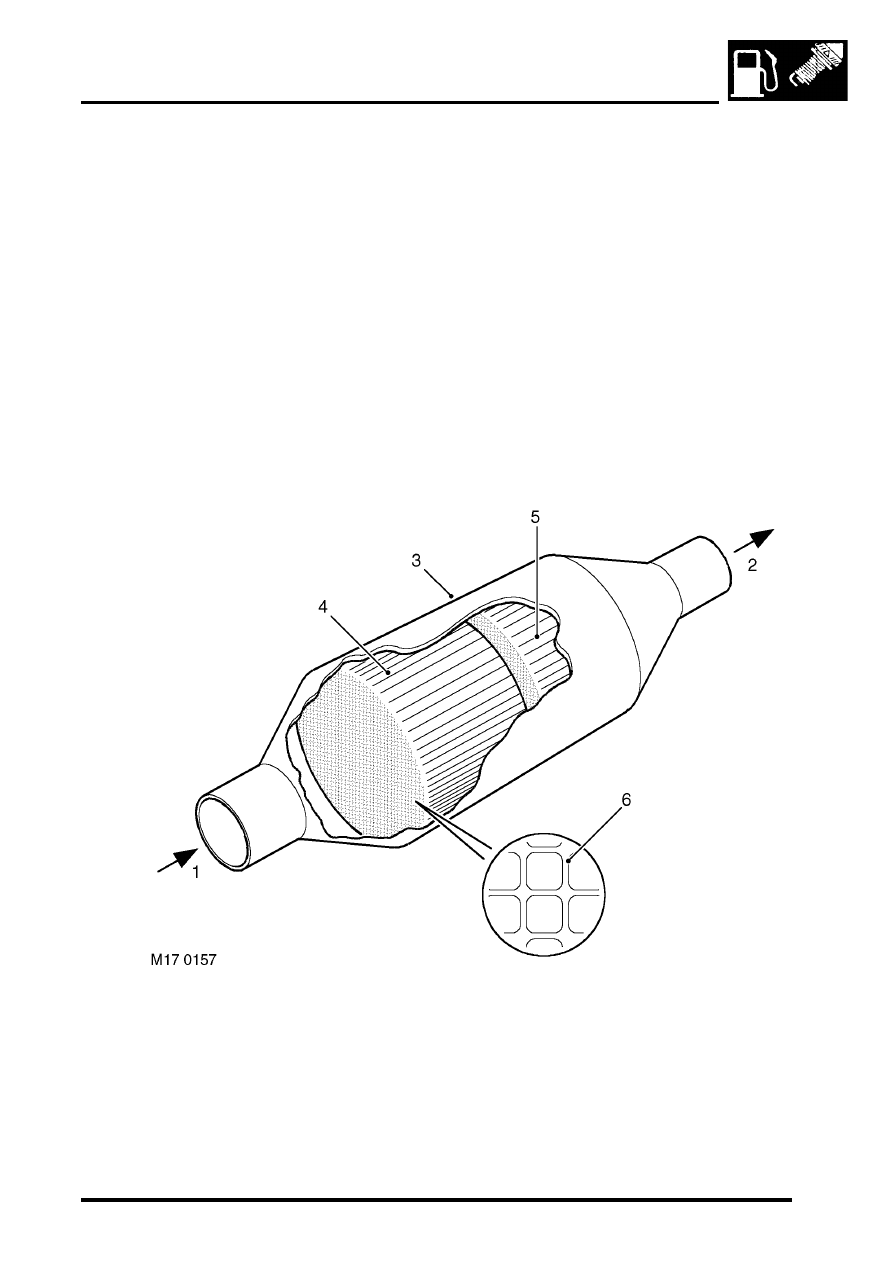Discovery 2. Manual - part 453

EMISSION CONTROL - V8
DESCRIPTION AND OPERATION 17-2-11
Changes in the oxygen content has subsequent effects on the levels of exhaust emissions experienced. The levels
of hydrocarbons and carbon monoxide produced around the stoichiometric ideal control range are minimised, but
peak emission of oxides of nitrogen are experienced around the same range.
Fuel metering
For a satisfactory combustion process, precise fuel injection quantity, timing and dispersion must be ensured. If the
air:fuel mixture in the combustion chamber is not thoroughly atomized and dispersed during the combustion stroke,
some of the fuel may remain unburnt which will lead to high HC emissions.
Ignition timing
The ignition timing can be changed to minimise exhaust emissions and fuel consumption in response to changes due
to the excess air factor. As the excess air factor increases, the optimum ignition angle is advanced to compensate for
delays in flame propagation.
Exhaust emission control components
The exhaust emission control components are described below:
Catalytic converter
1 Exhaust gas from manifold
2 Cleaned exhaust gas to tail pipe
3 Catalytic converter outer case
4 1st ceramic brick
5 2nd ceramic brick
6 Honeycomb structure
The catalytic converters are located in each of the front pipes from the exhaust manifolds.